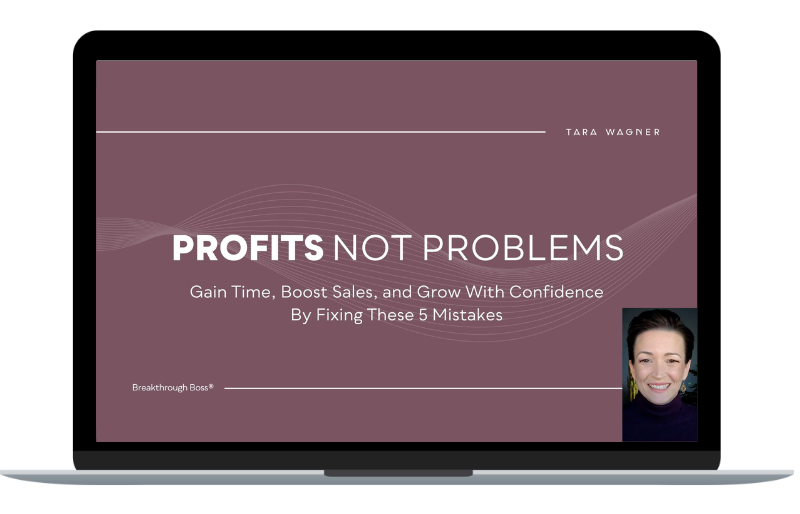Are you stuck on SMART goals and the deadlines that come with them?
My favorite time of year is the week between Christmas and New Year’s, where we get to look at the year that we’ve just had.
We look at all the things that we’ve created or accomplished, or didn’t create and didn’t accomplish. And we get to look at the year we want to have and set new intentions and goals.
This, by far, is my favorite thing to do.
Now you might be getting ready to set goals right now, too. And following all of the SMART goal advice, meaning it should be:
- Specific
- Measurable
- Attainable
- Realistic
- Time-bound (meaning it has a deadline.)
And while there is value to those deadlines, they usually don’t work.
Instead, they usually create frustration, overwhelm and paralysis instead of actual movement toward the actual goal.
So what I want to do in this blog post is show you how I set SMART goals a little differently, and what that T stands for in my SMART goals instead.
Watch here or scroll down if you prefer to read.
Three Reasons Hard Deadlines Don’t Work
So there’s this quote that says, “a goal without a deadline is just a dream.” I’m a little iffy on that.
I’m actually not a fan of hard deadlines on your goals for three different reasons.
Reason #1: Deadlines are often arbitrary
We pick them out of a hat or they’re based around the calendar instead of what actually makes sense for us.
If we’re just choosing a deadline because we have a birthday or New Year’s is coming up, we’re not actually doing something that makes sense for the goal and for what we need to accomplish the goal.
If we’re just choosing something because it’s the calendar, or because it sounds good, what’s the point?
Reason #2: They are often based on comparisons
And usually unfair comparisons.
An example of such comparison is what somebody else did in their first year or first three years of business.

Reason #3: They are often unrealistic
If you don’t already have experience with that specific type of SMART goal, for instance, you may be great at running your business.
But let’s say you go and start a new business.
You’ve got a new way of marketing. You may not actually know what is going to be realistic there yet.
So to put a deadline on it can again, put that unrealistic pressure on yourself as well.
For example, let’s say you’re in your first year of your first business versus you’re in your first year of your fifth business. After five businesses, you have a lot more experience setting those first-year goals.
You’re going to know what to do, what’s realistic and you can put some deadlines on it.
But if you’re doing something that’s new, even if it’s just a new marketing in your current business, that can be something that you have no idea what it’s actually going to take.
And so putting an unrealistic deadline on it just creates a lot of pressure and stress.
All of these things lead to goal fatigue and burnout when we’re wanting to set goals…but we’re so freaking tired of trying to achieve them.
How to Use SMART Goals Without Deadlines
But like I said, deadlines do have value.
They help us to create something so that we can reverse engineer it, chunk it down, and figure out what we need to actually be focusing on to get us towards the goal.
But there are three things that I do instead that ensure that I’m still making progress, aligning with my values, and meeting my own needs without burning myself out.
In fact, these are the three things that I helped a client do last year when she was setting her goals, that helped her to go from 200K to almost 500K in her business – and without actually working extra hours.
So let’s go through them one at a time:

#1: Set MTO Goals
First, what are MTO goals?
MTO means Minimum, Target, and Outrageous.
The Minimum goal is the goal that you’re pretty sure that you can hit.
It might be a little bit above where you’re currently at.
Maybe it’s maintaining where you’re currently at, but it’s your minimum.
You set the minimum because should anything happen, your year gets away from you. Crazy stuff happens, you have emergencies, and you hit your minimum.
So you need to make sure your minimum is something you know you can hit, even if you don’t have a great year.
The Target is the main thing that you’re kind of shooting for.
This is the number, goal, or outcome that you’re mostly wanting or that you feel pretty confident that you can get.
It’s generally going to be higher than where you are right now or better than what the goal might be.
It’s an improvement to your current location or your current station.
Your Outrageous goal is to say, if I really blew this out of the water, what would I then do?
So when we set an MTO goal, we want to be looking at what’s the minimum I know I can accomplish. “What am I actually shooting for?“
And if I have the ability, “how will I blow this out of the water?”
So financially you might say, okay, my minimum goal is 100K, my target goal is 150K and my outrageous goal would be 250K.
It feels totally undoable.
It feels crazy.
“I don’t know if I can do it, but that’s going to be my stretch goal.“
This is exactly what happened with my client. She set an MTO goal of 250, 350, and 500.
500 seemed outrageously impossible to her.
But because we did the next two steps, we were actually able to get her almost to her Outrageous goal far beyond her Target goal.

#2: Create a Timeline
This is what the ‘T’ in SMART goals stands for, for me.
Not Time-bound, but a Timeline, a target, (which could be the other thing we call that T.)
It gives us something to aim for.
And it gives us something to reverse engineer so that we can break it down into those smaller chunks.
But with a timeline, you’re not making it a hard deadline, right?
This isn’t something you have to do. This is what you think might be realistic.
And if you get it ahead of time – awesome. If it takes a little bit longer – who cares.
As long as you’re making progress towards it you have a general timeline to know about how much time each of these segments should take.
That’s all you need to be able to move on to the next step.

#3: Break into Process Goals
So when you have your timeline, you’re breaking it down into something like quarterly or monthly goals.
Then you’re breaking that down into weekly and daily habits.
This is what a process goal is.
It’s the process, the thing you need to do on a regular basis that will naturally lead you to your MTO goals.
This is what my client did.
We figured out what are the process goals? What are the things you need to focus on daily, weekly, maybe even on a monthly basis?
And because she did those things consistently, she was able to almost reach that Outrageous goal.
She definitely went far beyond her initial Target.
When you have process goals, you get to take your brain out of the big overwhelming picture of “how am I ever going to get there, this goal is so far away.”
Then you get to focus on just the daily habits.
What do I need to do today? What do we need to do this week?
This allows you to make that progress because you’re not getting distracted by something that’s six months down the road or 12 months or three years down the road.
You’re just focusing on what you need to be doing now, that will lead you in the right direction.
Actually, I have a blog post on Outcome versus Process Goals that will be supportive for you and your MTO goals.
You can read that post here.
Are you ready to focus on your MTO goals?
If you’d love more support on helping you to hit your business SMART goals next year, without burning yourself out, or trying to reach crazy deadlines, be sure to check out my Healthy Hustle Approach.
This free class, How To Use a Holistic Approach to Create a Profitable Business Without Burning Yourself Out will teach you the three mistakes small business owners are making and introduce you to the tools and strategies that will help you create reliable profits working less than 40 hours a week.
You can grab a free seat for that class by clicking below.
What about you, boss?
Tell us your Minimum, Target, and Outrageous goals for 2022.
Scroll down to share your goals in the comments.




